Bharatanatyam dancer and Nruthya Harikatha performer Srividya Anish, speaking exclusively to Natyahasini reveals that the distinction between traditional classical dance, Bharatanatyam and Nruthya Harikatha lies in their narrative approach. “While classical dance solely relies on movements and expressions, keeping the vachika (narration) separate, Nruthya Harikatha unifies the roles of singer, storyteller, and dancer. This fusion demands exceptional stamina, as the performer must simultaneously sing, dance, and narrate the story in the traditional Harikatha style,” she says. The dancer also states: “Unlike classical dance, which may not adhere to a specific storyline throughout the performance, Nruthya Harikatha revolves around a central theme or narrative that guides the presentation.”

Sharing her enthusiasm in enrolling for Nrutya Harikatha, at Vijayasri School of Harikatha, Srividya mentions her Guru Vishaka Hari, whom she affectionately calls ‘Manni’, also happens to be the daughter-in-law of her beloved spiritual guru Sri Sri Krishna Premi Swamigal, who has introduced her to senior artists through the online forums and provided with performance opportunities. “Recognizing my strong foundation in dance and the near-extinction of the traditional Harikatha style with abhinaya, she sought to revive this art form, giving birth to Nruthya Harikatha. A unique aspect of this style is the incorporation of jathis, adding a holistic dimension that encompasses abhinaya,” she says.
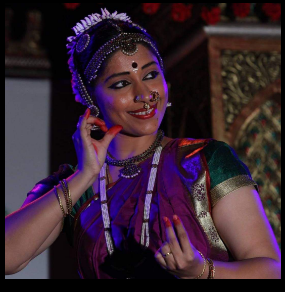
Seeds Sown In Madurai: Born to Balasubramanian & V. Ramamani and raised in Madurai, Srividya began learning Bharatanatyam in Madurai and also successfully performed her arangetram. She moved to Chennai after marriage, and following a stint of four-and-a-half years. Recalling her early dancing days, the dancer says: “I vividly remember my first guru teaching me the ‘Tha thai thai tha adavu’ and the sound of her metti anklets accompanying her graceful movements. Subsequently, I trained under my school dance teachers, Prema Karunakaran and Girija.”
After her father suggested to pursue dance seriously, she enrolled under Neela Krishnamoorthy, a senior dancer and disciple of Sri Vazhoor Ramaiya Pillai. “Her classes spanned six hours each on weekends, and her strict instruction proved instrumental in shaping my approach to dance. After her husband became unwell, she entrusted her students to her senior student, Balanandhakumar,” says the dancer, a mother of two.
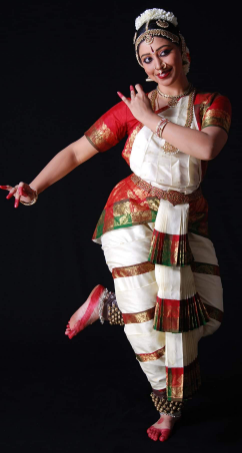
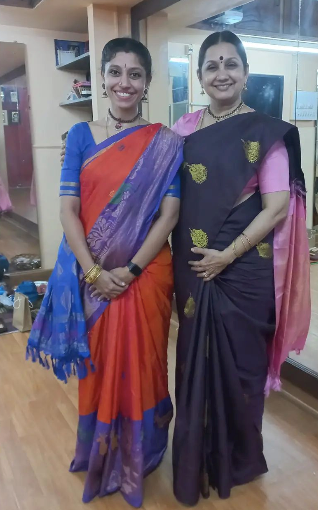
Many Accolades: The Bharatanatyam dancer shares that under Balanandhakumar’s guidance, she was quickly introduced to the margam items and gained immediate performance opportunities across Madurai, both as a solo artist and in lead roles in Bala mam’s group productions. “Touring under the banner of Layashethra, Bala ma’am’s school, I won numerous prizes in prestigious sabha performances and inter-school and inter-college competitions,” she says.
According to the Bharatanatyam dancer, due to work commitments and a subsequent relocation after marriage to Anish Kumar P, she primarily focused on self-choreography for dance shows for approximately five to six years. “However, during the COVID-19 pandemic, after having two children, I rekindled my desire for formal training and sought a teacher who could accommodate my family situation, job, and preference for online instruction. Guided by divine blessings, I found an ideal mentor in Kalaimamani Roja Kannan,” says the mother of two.
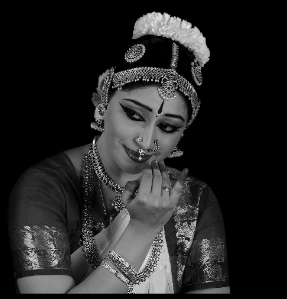
Srividya admits that though her primary training lies in the Vazhoor style, “Roja akka introduced me to the Kalakshetra style. The exposure to different teachers and their teaching styles, thought processes, and guru-shishya relationships has been invaluable. I have delved into Pandnallur, Vazhuvoor, and Kalakshetra styles, yet I have managed to carve my own unique style of execution. This ability to diverge and yet remain focused is the greatest benefit of learning from multiple teachers.”
Artistic Journey: Embarking on an artistic journey, Srividya embraced the vastness of the arts, recognizing it as an ocean of knowledge and endless possibilities. “The ideal dancer, as defined by the ancient scriptures, is expected to possess proficiency in musical instruments, rhythm, and literature. Guided by the blessings of my parents and divine grace, I have delved into these domains, expanding my horizons and deepening my understanding of dance. Music, literature, and abhang have enriched my thought process, encouraging me to transcend the boundaries of traditional instruction and explore new avenues of creativity. These disciplines have empowered me in self-choreography, independent production, ideation, concept development, and more. I wholeheartedly recommend that dancers pursue knowledge in music, rhythm, and literature to gain a comprehensive perspective on this magnificent art form,” she says.
The Nrutya Harikata artist thanks her family for their continuous support in following her art passion. “The unwavering support of my parents and spiritual guru, Sri Sri Krishna Premi Swamigal, has been instrumental in my artistic journey. My mother diligently monitors my practice sessions, while my father has been my steadfast companion, accompanying me to every class and performance since childhood. Presently, my husband and children form the bedrock of my support system, alongside my parents. Their unwavering belief in my abilities has been the driving force behind my continued pursuit of dance,” says Srividya.
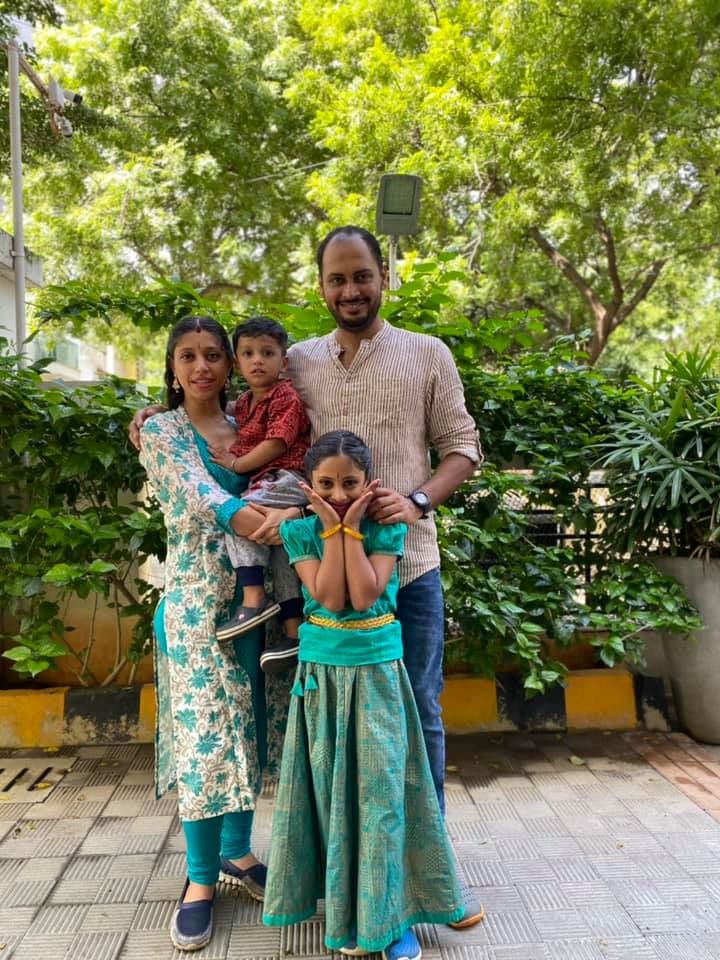
Payment Concerns: Voicing concerns about payment, the dancer says that payment often leads to scrutiny and questioning of one’s dedication to the art form. “The notion of “dancing for free” prevails, with aspiring dancers eager for opportunities at any cost. This abundance of uncompensated talent further perpetuates the undervaluation of dance as a profession. My unwavering determination to pursue dance alongside a fulfilling career necessitated a strong educational foundation,” she states.
On balancing a demanding career, a passion for dance, and family responsibilities, Srividya says that it requires a delicate act of juggling and compromise. “While some days are meticulously planned, others demand flexibility and adaptability. My weekdays and weekends are tightly scheduled, with a significant portion of my time dedicated to my professional obligations and dance practice. Achieving true balance is a continuous negotiation, requiring occasional sacrifices in one area to excel in another.”
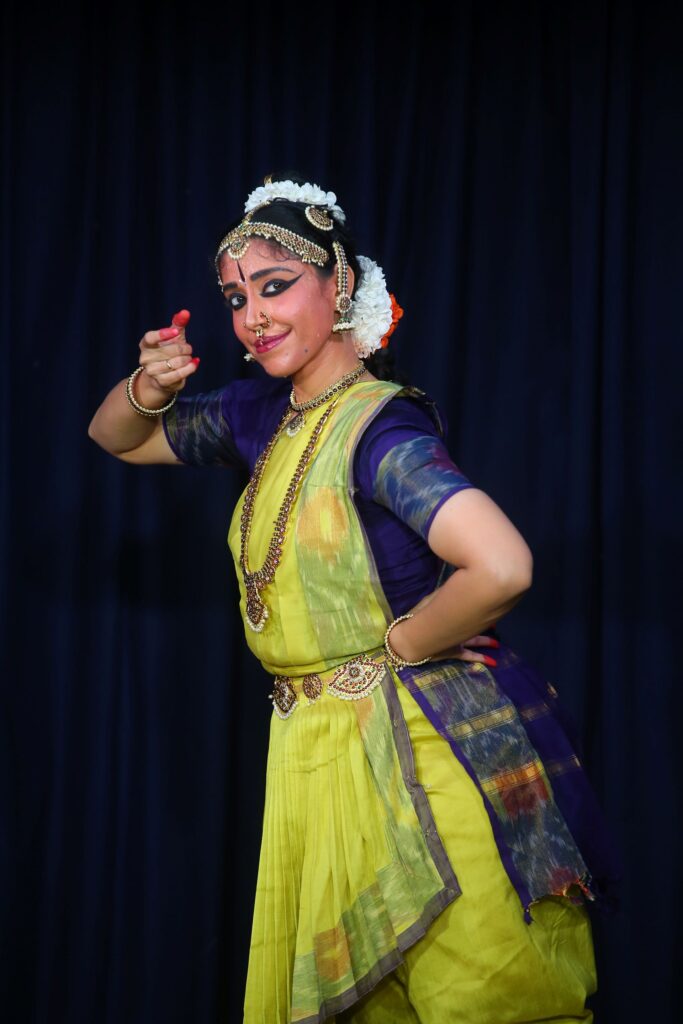
The dancer sharing her daily routine, says: “It begins with a morning yoga practice, followed by sending my children to school. After a refreshing cup of ginger chai, I either start my workday from home or dedicate time to my creative pursuits, such as dance, music, drawing and painting, or reading,” or on some days, she simply allows herself time for quiet contemplation and introspection.
Dream For City: Making Hyderabad her home in 2017, Srividya is of the opinion that the Nawabi City remains relatively untouched by the complexities of art politics and the commercialization of the arts scene. “While I wholeheartedly encourage the influx of dancers and performers to elevate Hyderabad’s cultural standing to match that of cities like Bangalore and Chennai, I harbour a concern that the city’s artistic integrity might be compromised by excessive commercialization. Hyderabad boasts a vibrant pool of talented artists, yet they often face a dearth of appreciative audiences,” she states, but this can be rectified if organizers can prioritize opportunities for emerging artists alongside renowned performers. “This approach would not only showcase Hyderabad’s homegrown talent but also foster a more inclusive and supportive arts scene,” she feels.
